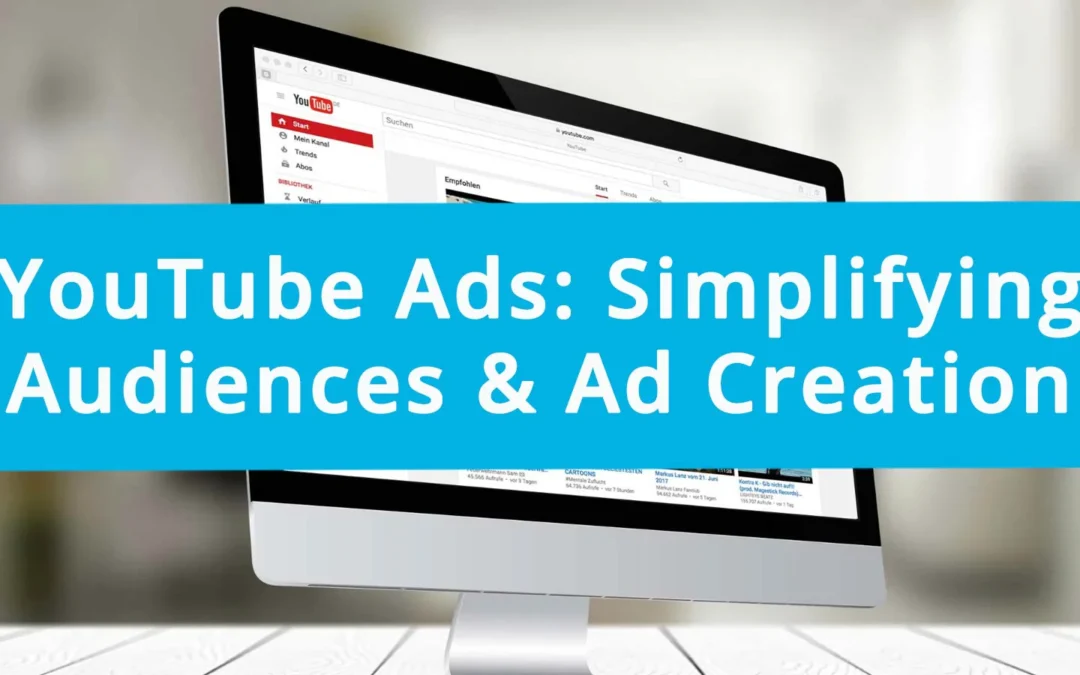With over 2 billion visitors per month — and billions more video views — YouTube is a major platform for engaging targeted audiences with advertising messages. Not only has it essentially become a search engine in its own right, but 88% of video marketers reported that video gives them a positive ROI. So, it’s worth testing out for your own group of target prospects.
If you’ve never tested YouTube Ads, the setup is similar to other Google Ads campaigns in which you identify your budget, bidding strategy, and target location. Where it gets a little more complicated is in determining which audiences to target (there are so many options!) and building the video ads themselves (do you even have video content you could use?).
The following post will dive into these two topics and provide a few of the best practices and tips that we find help us in maximizing our time and getting the best results on YouTube for our clients.
Audiences: Defining, Segmentation, and Remarketing
First: audiences.
Over the last few years, the options for defining audiences have evolved significantly to allow advertisers to target people based not only on how they interact with your business but also by these three criteria:
Demographics — Who are they (Age, gender, household income and parental status)
Affinity — What their interests and habits are (food, entertainment, hobbies, etc.)
Intent — What they are searching and planning (in-market and life events)
Remarketing/Customer Match — If they’ve interacted with your business in the past (visiting the site or signing up for email lists)
Custom Audiences — Create a unique audience by the terms they’ve searched or websites they’ve visited
While, on one hand, having so many options is empowering, it can also be overwhelming. To save you the headache, we’ve identified the top three audience types we utilize based on performance.
Remarketing: Engaged Website Visitors
As we all know, audiences who have already engaged with your brand are some of the lowest hanging fruit to target because they are farther down the funnel in their customer journey, and may only need one or two more touchpoints to convert. If you have enough traffic, we recommend starting narrow — with highly engaged audiences such as cart abandoners or specific product category viewers.
While a narrower audience does provide the opportunity to better tailor the video ad messaging, testing a broader audience, such as engaged site visitors who haven’t yet purchased, can also be useful in keeping your brand top of mind while ideally driving users back to the site.
Tadpull Tip: Creating remarketing audiences in Google Ads can be time-consuming, so we love this custom Google Analytics audience builder template. It automatically builds some of the most common remarketing audiences right in your Google Analytics account with the click of a button.
You might need to customize the audiences in the template based on your site’s traffic levels, but the automatic import can help streamline the process.

Brand Awareness: Custom Audience Segments
Although Google provides several predefined affinity categories, they are based on broad user interests. We typically prefer to build our own custom segments.
With custom affinity audiences, you create an audience based on a few key features all focused around user’s interests:
- Interests: Keywords phrases defining a user’s interests — “Deer hunting”
- URLs: Websites with content a user is interested in — “theoutdoorlife.com”
- Apps: Apps a target user might have — “onXmaps”
Here’s the secret: developing the right combination of these elements and honing in on an ideal affinity audience for your specific offering. Because affinity audiences are less intent-based, we often focus on driving brand awareness through these ads, as they are more likely to be at the top of the funnel.
Typically, you and your team know best what your customers’ interests are, so tap into your internal knowledge. But another resource for gaining insight into interest targeting is Facebook’s “Audience Insights.” Facebook will provide details on what top categories and page likes your page’s users have among other demographic and behavioral information.
Prospecting: In-Market Segments
Moving on to in-market segments, you can target users based on their recent purchase intentions. As such, these audiences allow you to reach customers as they are making purchasing decisions. The video content should revolve around the product and offering a unique selling proposition.
Say for example you sell baby items. There are several in-market segments for users looking for baby apparel, strollers, hygiene items and more. You can also target users who were recently married and may be thinking about children soon.
Video Ads: Creation and Conversion Strategies
Once you’ve determined who you want to target, then comes the decision of what you want to target them with. If you already have existing videos that could be compelling to an audience — including brand or product features/reviews, user-generated content, etc. — then you can easily repurpose it for a YouTube ad.
However, one of the main reasons that ecommerce companies aren’t able to advertise on YouTube is simply because they don’t have existing video content or the resources to create it. So, unless you can afford to hire an outside shop or your internal team has time to produce some relevant material, you used to be out of luck when it came to running video ads.
Key phrase: Used to be.
Cue Google’s Ads latest product: YouTube Video Builder. This tool greatly simplifies creating video ads, so all you need is images, texts, and logos, and the builder will help you do the rest. Essentially, the tool allows you to animate static assets into a short video with the following steps:
Step 1: Choose a Layout
There are a variety of layout options available. Sift through them to find one that fits your ad goal. For example, showcasing a product or brand.
Step 2: Add Images/Logo/Text
With a layout selected, you can now drag and drop images and logos that you want to use, as well as define the text overlays.
Step 3: Add Font/Music
Touches, including choosing your own font and music from Google’s provided library, can help in personalizing and making your ads more attention-grabbing. Then, simply click ‘Create video’ and you’re ready to start advertising!
With this tool, companies without usable content can now easily test YouTube ads. Plus, anyone already running ads can add to their existing video library and split test performance across campaigns, or quickly vet new messaging. As a bonus, the videos can also be used on other media — including your own site and email — which means the time investment can go a long way with a multi-channel strategy in place.
Tadpull is currently running several split tests with existing video ads for several of our clients. If you see any interesting results from your own ads, or need help getting started, we’d love to hear from you.
Featured Image: pxfuel.com

